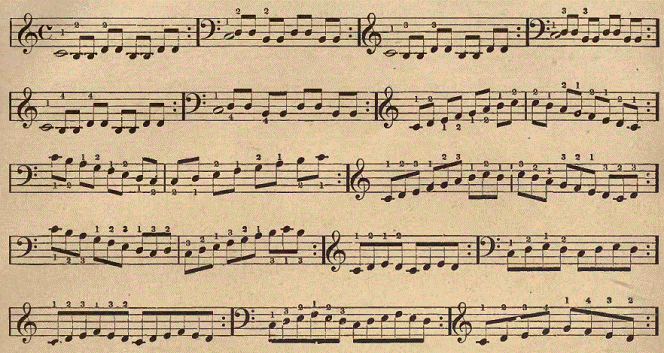How to study piano scales : preparatory excercises
Schumann, the celebrated composer and author, says in his “Rules and Maxims for Young Musicians” : “You must industriously practice scales and other finger exercises. There are people, however, who think they may attain to everything by doing this; until a ripe age they daily practice mechanical exercises for many hours. That is as reasonable as trying to pronounce A, B, C, quicker and quicker every day. Make a better use of your time.” The student will see from the foregoing that his musical education is a two-fold one. He must develop a good technique and cultivate correct taste in playing.
For this reason, the exercises are interspersed with suitable amusements, etc. The study of suitable pieces and exercises must be carried on Bide by side. Let neither be neglected. The student should daily practice scales and five-finder exercises, for without them success as a pianist is not possible.
The art of piano playing depends largely upon scales, for there is scarcely a piece of music that does not introduce in one way or in another. As in the scales the thumbs are passed under the other fingers, and the third and second are passed over the thumbs, we will first practice this motion, so that the thumb-joints may be made flexible.
The smoothness of passages and scales depends upon the manner in which the thumb passes under the other fingers, or the fingers pass over the thumb. The following exercises have this lesson in view.
Preparatory exercises for scales
Move the hand as little as possible. When putting the thumb under the fingers or the fingers over the thumb the hand should not turn, while the thumb and fingers should move.





